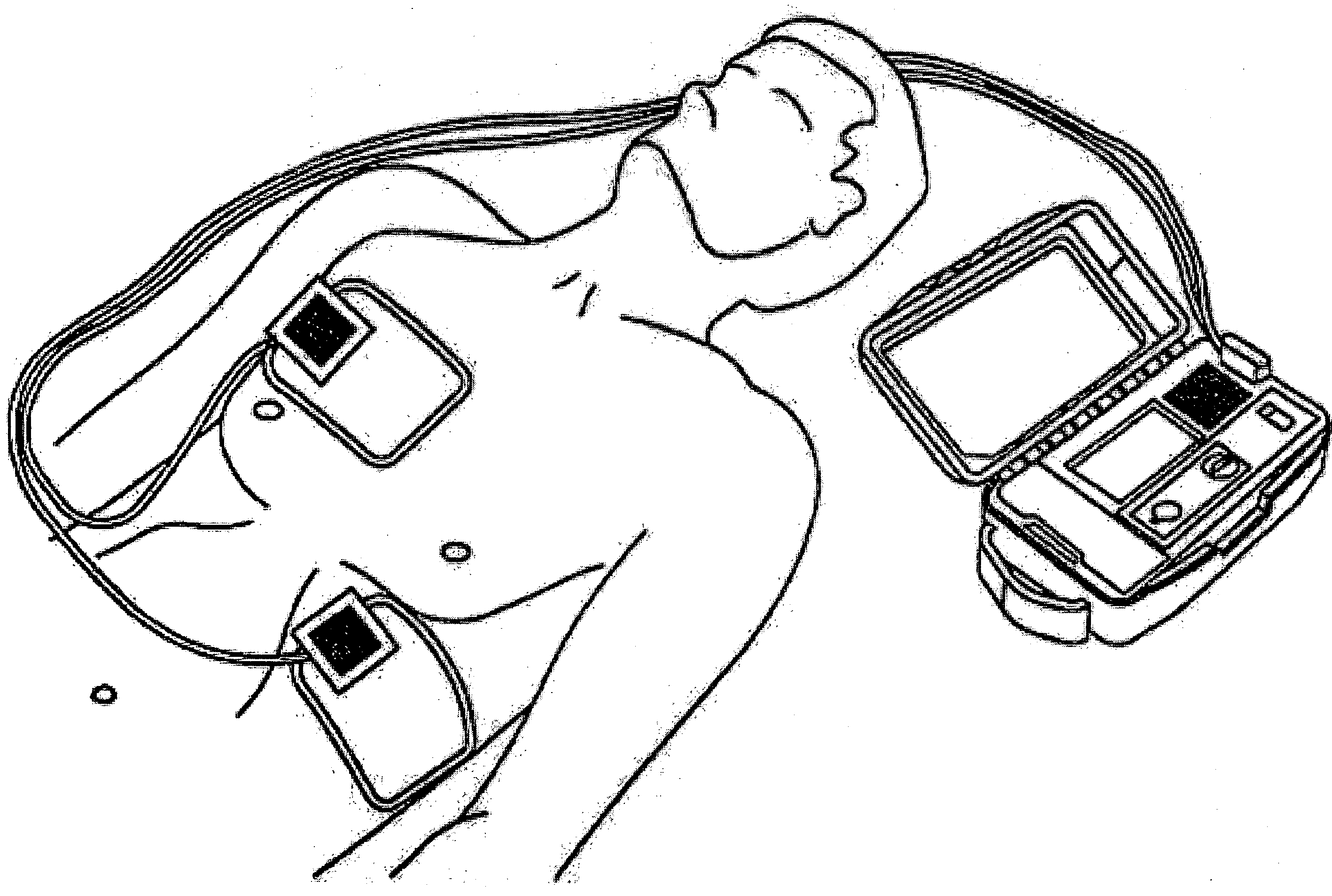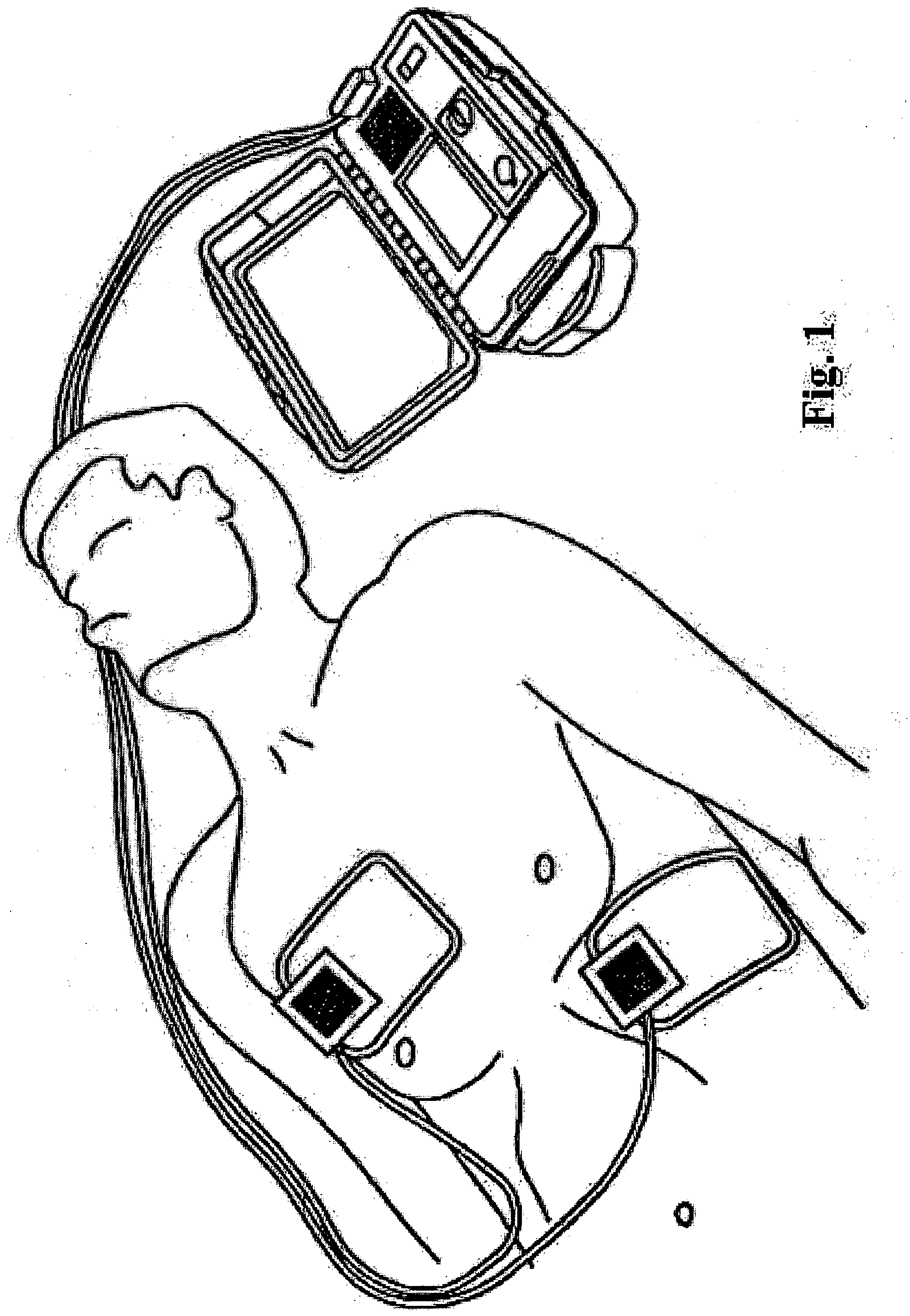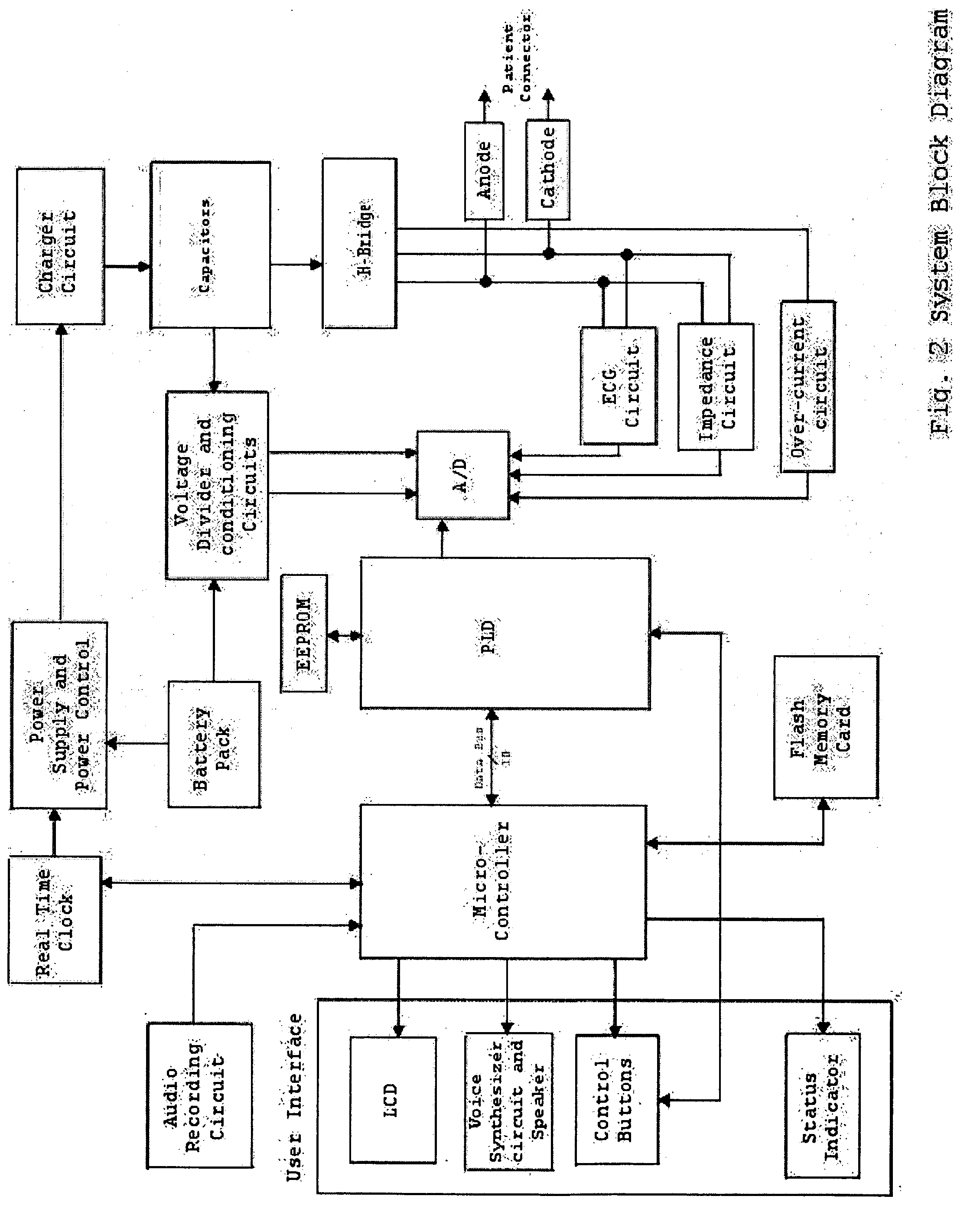System and method for performing self-test in an automatic external defibrillator (AED)
a self-testing and automatic technology, applied in the field of automatic external defibrillators, can solve the problems of loss of consciousness, insufficient blood flow to the brain and other organs, and death
- Summary
- Abstract
- Description
- Claims
- Application Information
AI Technical Summary
Benefits of technology
Problems solved by technology
Method used
Image
Examples
Embodiment Construction
[0060] The present invention comprises a system and method for performing self-tests in an AED.
[0061] As shown in FIG. 1, the patient is connected to the AED via a pair of electrodes, which are attached directly to the skin of the patient's chest. The defibrillator uses the electrodes to provide defibrillation shocks to the patient, where a pulsed electrical current is passed through the patient's heart. The AED also uses the electrodes to first sense ECG signals from the patient so as to determine the condition of the patient's heart (i.e., shockable or not). The electrodes contain a conductive hydogel which secures the pad to the patient's skin and provides good electrical conductivity. The electrodes are terminated with a connector, which is generally connected to the defibrillator after the pads have been applied to the patient.
[0062] In a preferred embodiment of the present invention, the electrodes are sealed in a tray, which resides in the lid of the AED. The electrodes are...
PUM
 Login to View More
Login to View More Abstract
Description
Claims
Application Information
 Login to View More
Login to View More - R&D
- Intellectual Property
- Life Sciences
- Materials
- Tech Scout
- Unparalleled Data Quality
- Higher Quality Content
- 60% Fewer Hallucinations
Browse by: Latest US Patents, China's latest patents, Technical Efficacy Thesaurus, Application Domain, Technology Topic, Popular Technical Reports.
© 2025 PatSnap. All rights reserved.Legal|Privacy policy|Modern Slavery Act Transparency Statement|Sitemap|About US| Contact US: help@patsnap.com



